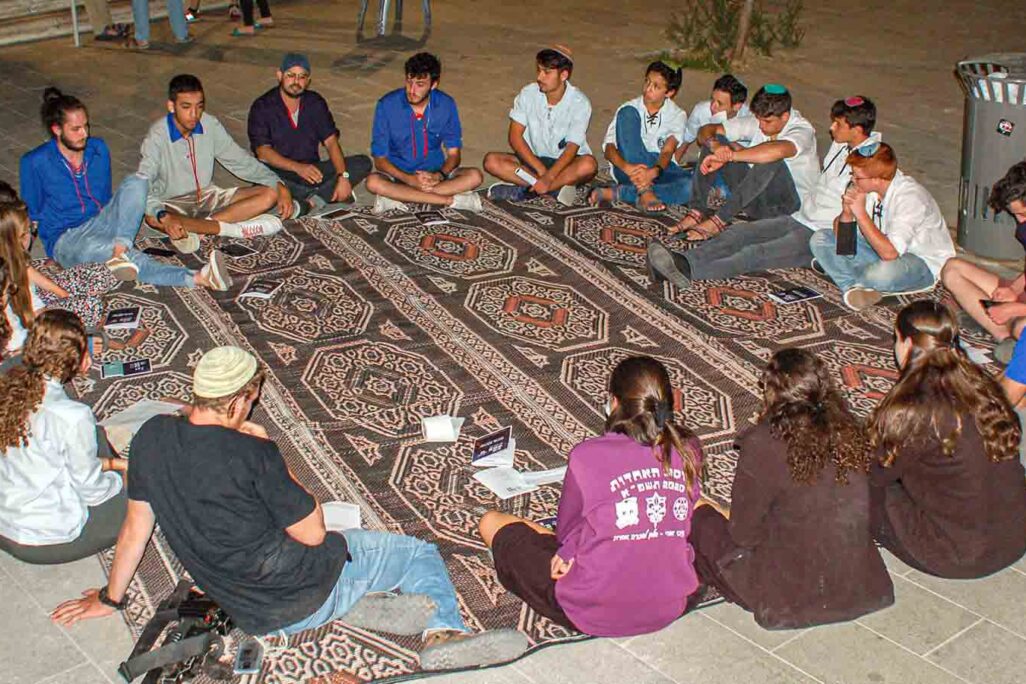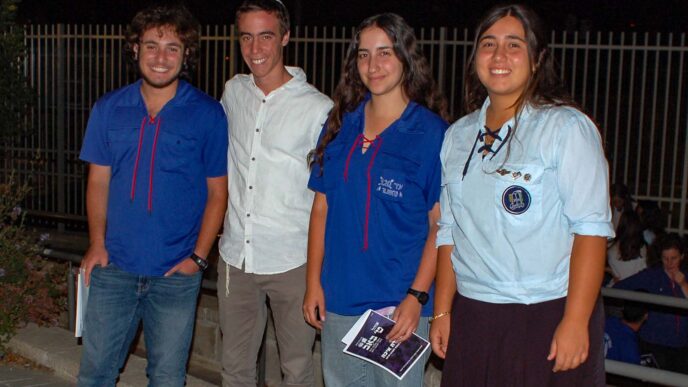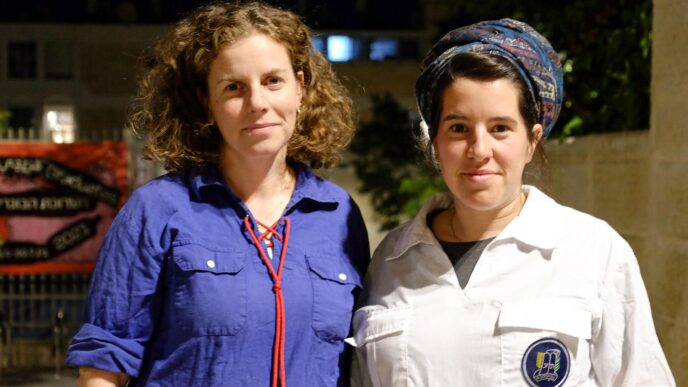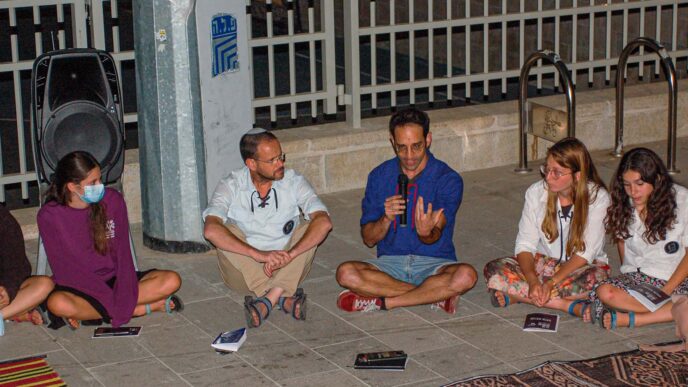
Last Saturday night, a very unusual event occurred: secular and religious young people met to discuss the challenges of an increasingly polarized and divided Israeli society. The Bnei Akiva and HaNoar HaOved v’Halomed youth movements held dialogue circles in the heart of Jerusalem in an attempt to provide an alternative image to the extremism in the political and media discourse.
These round-table discussions were held in honor of Tisha B’Av, an annual fast day commemorating several disasters in Jewish history, and were meant to bring together Jewish people across political and religious divides.
“I strongly believe in dialogue circles,” said Neve Obriki, a young counselor in Bnei Akiva. “All I see in the news and in the Knesset is that there is a huge gap between us. You have to go into the streets, talk and listen, to understand that there is much more closeness than what is broadcast.”

The Tisha B'Av meetups between the two movements, who differ distinctly in their ideologies, began during Operation Tzuk Eitan in 2014, in a dialogue tent set up in Rabin Square. HaNoar HaOved, or NOAL, is a movement with roots originating in Israel’s socialist Zionist Labor movement, while Bnei Akiva is traditionally linked to the religious Zionist movement. In the background of their 2014 meeting was the rise of severe and violent extremism in Israeli society during the course of the fighting, between both right-wing and left-wing, and between Jews and Arabs. The event has since become a tradition, interrupted last summer due to COVID-19.
On Saturday, the day before Tisha B’Av, the meetings returned in a different format: instead of one large and central event, a number of smaller events were held throughout the country – in Jerusalem, Holon, Beer Sheva and the Merom Hagalil Regional Council. These meetings join a series of other initiatives to mark Tisha B'Av – from memorials in Zion Square for the late Shira Banki, who was murdered at the Tel Aviv Pride Parade in 2015, to the “Tonight We Do Not Study Torah” event held by secular, religious and ultra-Orthodox Jews under the network organization Or Torah Stone.
Saturday’s event was attended by over 100 participants, youth and adult members of the two movements, who read the Book of Lamentations together and discussed the relationship of religious and secular people in light of the pandemic, and two months after Operation Guardian of the Walls.
“There are young people here, leaders who are responsible for younger people, with a public behind them, it has an impact,” said Anat Shavit, Jerusalem District Coordinator for NOAL. “Even for those who have never read the Book of Lamentations, a few words enter your heart, and then move things forward.”
Tehila Oppenheimer, coordinator of the senior cohort of the Jerusalem district of Bnei Akiva, said that “if this meeting causes me to be a little more forgiving towards the other side, then there is progress here.”

According to Shavit and Oppenheimer, youth movement members in the secular public are almost completely unfamiliar with Tisha B’Av, while in the religious public, the day is characterized by prayers and study circles, not necessarily identified with social gatherings.
In both movements, there is debate and disagreement about the event itself.
“Some of us say that there is less religious spirit in the meeting with HaNoar HaOved,” said Oppenheimer, while Shavit described the challenge of recruiting the Arab partners to attend the event.
“There is a certain tension in attending such a meeting,” said Hadar Shitrit, a young counselor from Bnei Akiva. “I represent my community, and that creates a certain impression. The NOAL shirt has an inscription in Arabic, which raises the concern that the other side is extremist. So how can there be a relationship? But the other side can also think that I am the most extreme, and that is not true.”
Shitrit reported that “as the conversation progressed, things got less stressed.”
For most of the youth movement members who came to the event, this is not the first meetup with the other youth movement. Apart from the Tisha B'Av event, the two movements have been holding joint events in recent years, around the Memorial Day for Rabin’s assassination.
“Things have changed and we are used to meetings of this kind, and that is a very good thing in my eyes,” said Jonathan Purcell, a counselor for HaNoar HaOved’s gap year.
According to Purcell, one of the main arguments in the circle revolved around the ability to live next to each other. Among other things, a discussion arose about geographical location and the fact that the secular and religious publics are separated in most residential areas. Obriki argued that it would have been better for the two communities to be more involved with each other and that is how he would like to live. Shitrit maintained that living separately is good, but meeting points between the communities should be encouraged.
“I live in a religious community and study in an ulpana (religious school for girls),” she said. “I meet secular people mainly through the news, and it is important for me to get to know the other side, even though our values are different.”
“At the end of the day, we will not be able to see eye to eye on everything,” Obriki added. “But we are members of movements that will lead and volunteer together, and that means something to each other.”

“If our words just push each other away, then we have accomplished nothing”
Similar to 2014, this year’s event was also held after a bout of severe violence, with Jerusalem as one of the prominent focal points of the events. The discussions in the dialogue circles dealt with the challenge of living together, Jews and Arabs.
“There was a lot of violence,” said Maya Omri, a counselor of NOAL’s gap year. “There was a certain break in the trust of living side by side, especially in mixed cities like Jerusalem. For me personally, it was difficult.”
“Personally, I have a belief that Arabs and Jews can live side by side. It is difficult, but the youth movements can deal with it,” Oppenheimer said.
Shavit and Oppenheimer believe that with all the difficulties and extremism in Israeli society, the dialogue allows for a common clarification of concepts. This is the best way a meaningful discourse can be shaped with the goal of building a better future.
“At the end of the day, we need to speak to young people in a language they understand,” said Shavit. “If our words just push each other away, then we have accomplished nothing.”






